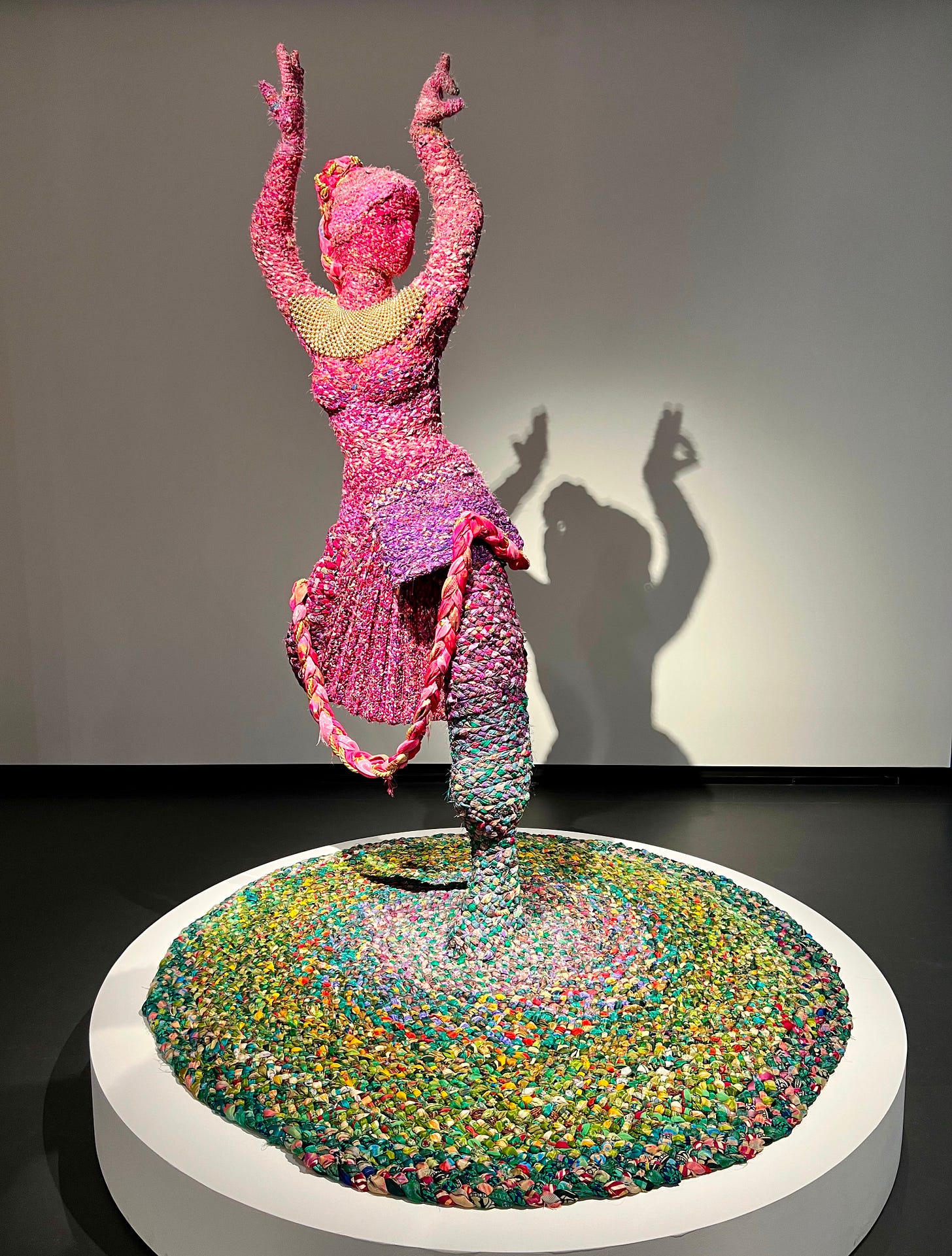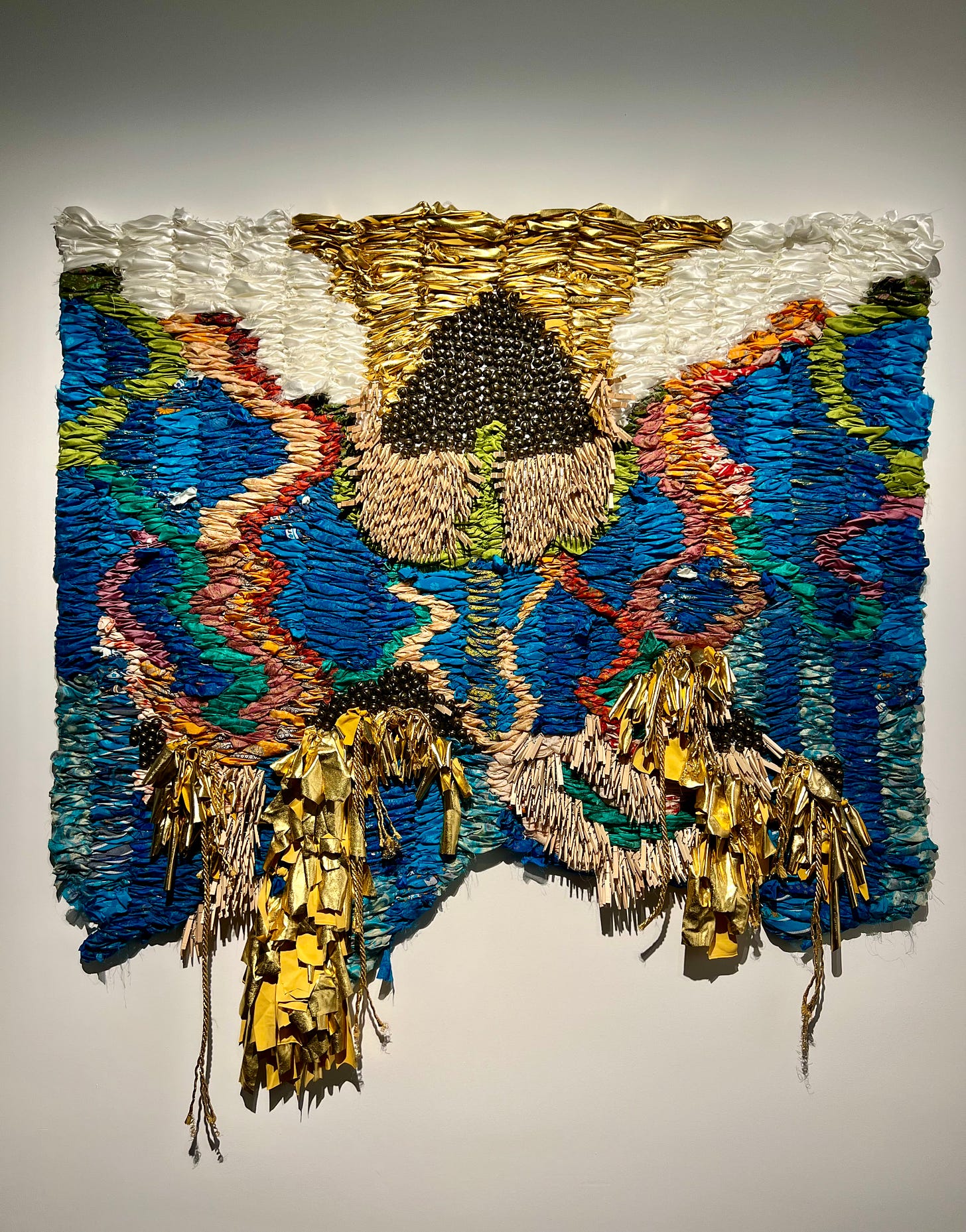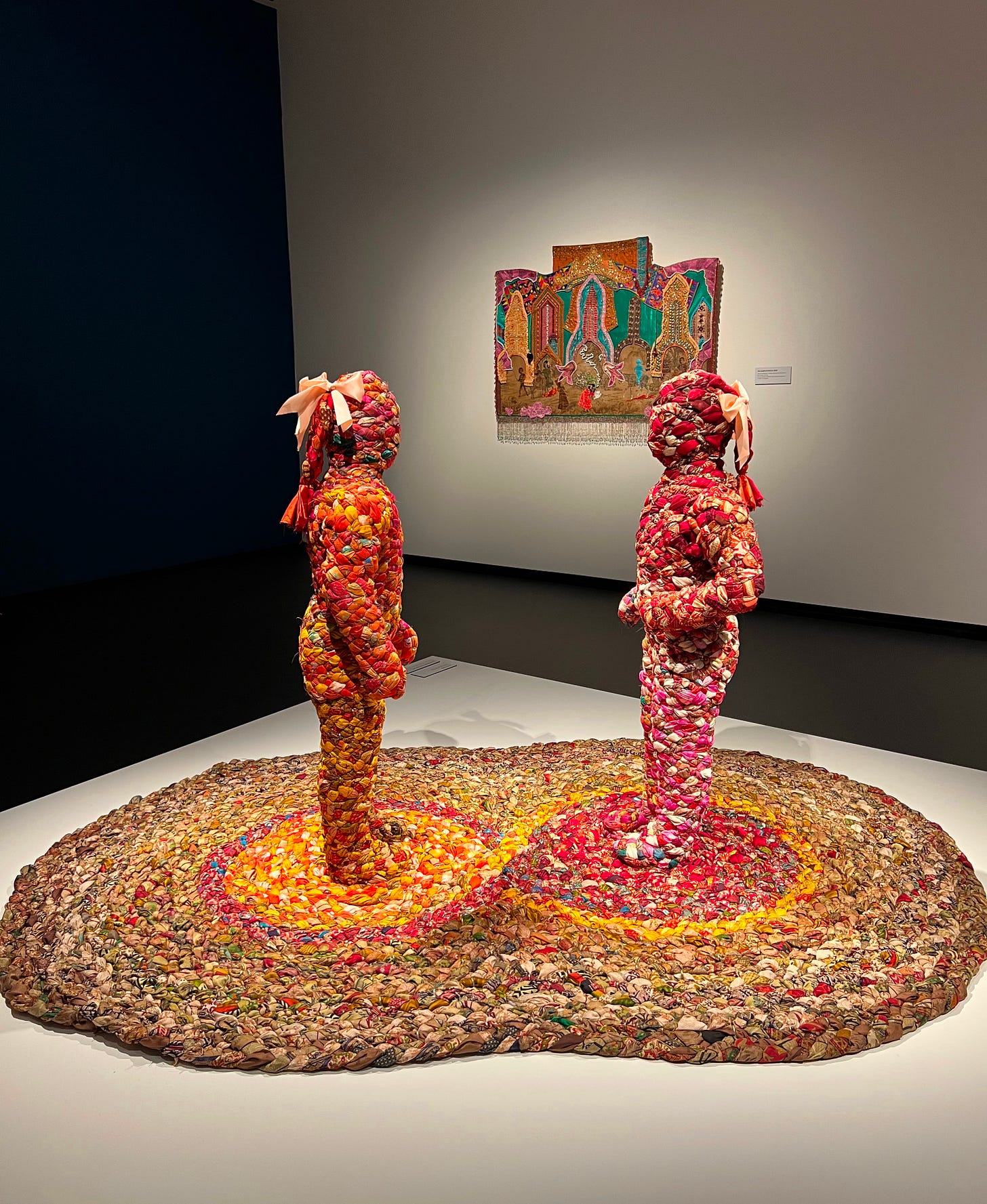Exploring “Myth from Matter”
A solo exhibition by Suchitra Mattai at the National Museum of Women in the Arts
My first adventure of 2025 was a trip to Washington, DC to see “Myth from Matter,” a solo exhibition by my sister, interdisciplinary artist Suchitra Mattai, at the National Museum of Women in the Arts, open until January 12th. It was a thrill to see the show written up in the New York Times in December, and a joy to finally experience it in person.
Three dozen of Suchitra’s creations filled the second floor of the museum, from large-scale installations to intimate works on paper. Exploring themes of history, identity and belonging, each piece was full of story, layering ancient myths and colonial histories with personal narratives.
There were several lush iterations of Suchitra’s signature “sari weavings,” tapestries handwoven with strips of Indian saris, some of them sourced from our mother’s own collection. Each strip was placed strategically to create a nuanced composition, like she was painting with fabric. Variations on this technique incorporated other disparate elements, like clothespins and ghungroos, the bells worn by Indian dancers. The vernacular of the domestic and the language of ritual came together to create something sublime.
Through the exhibition, Suchitra reworked vintage tapestries and needlepoints, intervening with her own marks. Lines of brightly colored embroidery thread, bindis and sequins contrasted with the faded tones of document textiles. European figures in traditional tableaus were recast in darker skin tones, a process she called “brown reclamation.”
As I studied the detailed handwork, I kept thinking about our maternal grandmother in Georgetown, Guyana, sewing clothes for customers late at night in the bedroom where her daughters slept (this after cooking three meals a day from scratch for a family of eleven!). She made everything from uniforms to bell bottoms to wedding gowns, and taught embroidery to local teenage girls while her kids were at school. The legacy of her craft and the invisible labor of so many women like her was now front and center.
One of my favorite pieces in the show was a sculpture entitled, “re-union.” Formed with twists of colorful fabric, two young girls in pigtails faced each other, their bodies emerging from whorls of the same island. The figures were disparate, yet inextricably connected. Perhaps I was drawn to the piece because of my own young daughter. Perhaps it was because they looked like sisters. I don’t know why, but I felt like I knew these girls. There was a space between them, as though they had run toward each other, and suddenly stopped short. In their wordless exchange, I saw the relief of finding someone familiar in an otherwise hostile world. They were young and vulnerable, but they had each other.
Like many of the works in the exhibition, it was shown in dialogue with a piece of historical art that Suchitra and the curatorial team had selected. In this case, “re-union” was in the same room as “Legs,” by Louise Bourgeois, one of my sister’s favorite artists. Borrowed from the Hirshhorn Museum, the piece was an elongated pair of thin black rubber legs with no torso. Both works, along with several others in the same room, referenced the body, and played with the concept of pairs.
“If you want to create a new mythology, you have to undo existing narratives, and unravel the old stories to create new ones.”
Before I left, a chatty guard took my picture in front of “a cosmic awakening,” a sweeping tapestry interwoven with rich jewel tones and metallic fringe, its sumptuous folds dappled with light and shadow. As I watched visitors enter the show, it was all I could do not to grab their arms and shout, like a crazy person, “This is my sister!”
“Myth from Matter” was well worth the journey. I couldn’t think of a better way to start out the new year.
Cheers to 2025!







